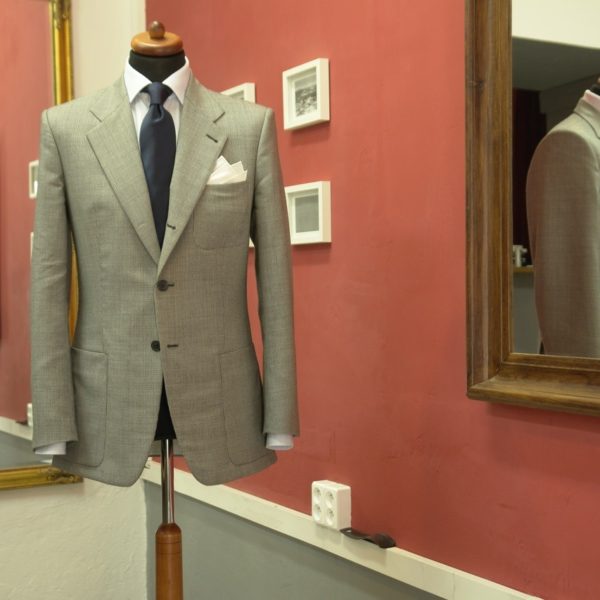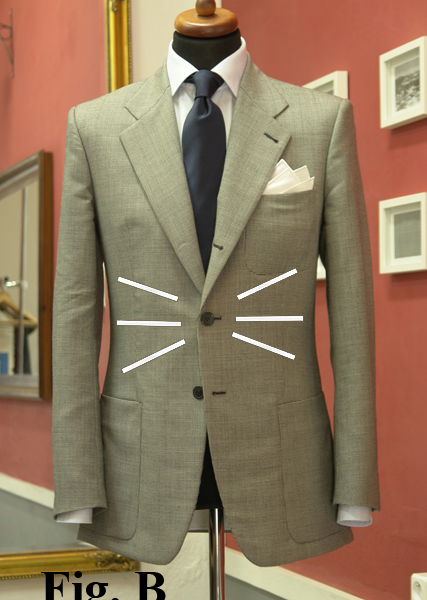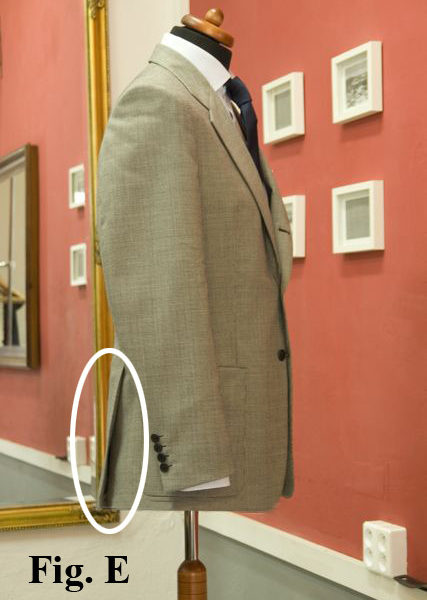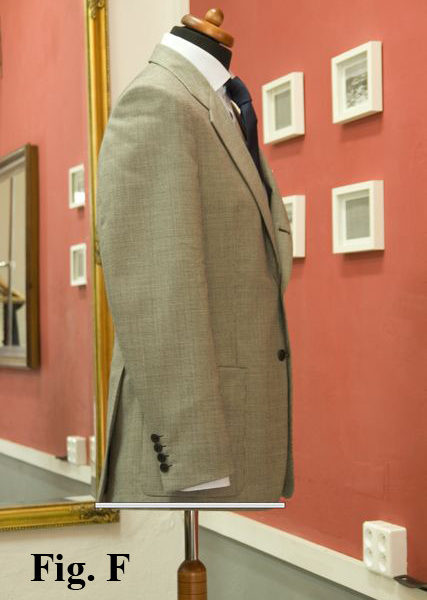
- Fig. A
- Fig. B
- Fig. C
- Fig. D
- Fig. E
- Fig. F
- Fig. F
A couple of weeks ago, I said that there are different schools of thought on how a jacket should fit, but trousers should only fit one way. Upon reflection, I now realize that was a bit misleading. There’s a difference between style and fit. Generally speaking, style is about silhouette, whereas fit is about whether something sit on you correctly. Simon Crompton has a good article about this difference.
There are different silhouettes for jackets, but the rules we have for how they should fit are similar to those we have for trousers. There shouldn’t be any pulls or puckers along the front or back, the sleeves should be free of any ripples when the arms are naturally hanging down, and the jacket should have clean lines all around. These principles should be true regardless of the jacket’s style (e.g. clean, draped, padded, natural, skinny, full).
Unlike trousers, however, suit jackets and sport coats are much harder to fit well. Their construction is more complicated, so there are more things that can go wrong. Above is a set of photographs I’ve stolen from Macaroni Tomato and slightly modified. Each photo illustrates a common defect. Click on each of the photographs, and you’ll see that they’re lettered.
- Fig. A. Sleevehead and Collar: The most difficult areas to fit well are perhaps the shoulders and collar. A properly fitting jacket shouldn’t have any indentations in the sleeveheads and it should stay glued to your neck at all times.
- Fig. B. Strained Buttoning Point: Here tightness at the buttoning point can result in a jacket pulling around the waist, effectively forming an “X.“ To be sure, this is sometimes purposefully done in the name of fashion, but more often than not, it’s a sign that a jacket is too tight. (Note that the jacket pictured here doesn’t have problems in this area).
- Fig C. Messy Back: Likewise, the back can have unsightly folds or pulling along the waist, around the shoulder blades, and underneath the collar. A well fitting jacket should have none of these issues, but rather fit cleanly.
- Fig. D. Sleeve Pitch: If the sleeve isn’t attached to the jacket at a degree that harmonizes with the wearer’s natural stance, you may see furrows along the sleeve. You can see an example of this here.
- Fig. E. Flared Vents: A properly fitting jacket should always have closed vents, like the ones in this picture. Make sure yours don’t flare out or gape.
- Fig. F. Balance: The term “balance” can refer to a few things on a jacket, but in this case, we’re talking about the relationship between the front and back of the jacket, as well as left and right sides. There are two schools of thought on how the front and back should balance. Most tailors believe that the front should be slightly longer than the back, but a few think they should evenly align. Here, the jacket’s front is even with the back. Another aspect of balance concerns the left and right sides. Here there is less controversy; these two parts should always be dead even with each other along the hem. If you wish to read more about this issue, check out this article by Michael Anton.
Like we saw for trousers, there can be a number of causes for these defects. Depending on the cause and how your jacket is constructed, an alterationist tailor may or may not be able to fix the problems for you (at least within a reasonable cost). The easiest to fix are Figures B and C. Indeed, those are rather common to clean up, so unless you see severe problems in those areas, you needn’t worry about them. The rest you should probably make sure fits right off the peg.
To read more about fit, you can check out my posts on trousers and silhouettes, as well as Jesse’s posts on jackets, collar gaps, an unfortunate Pitti Uomo attendee, and Conan O’Brien. This simple guide by Esquire and Ethan Desu’s comments are also worth reviewing.







